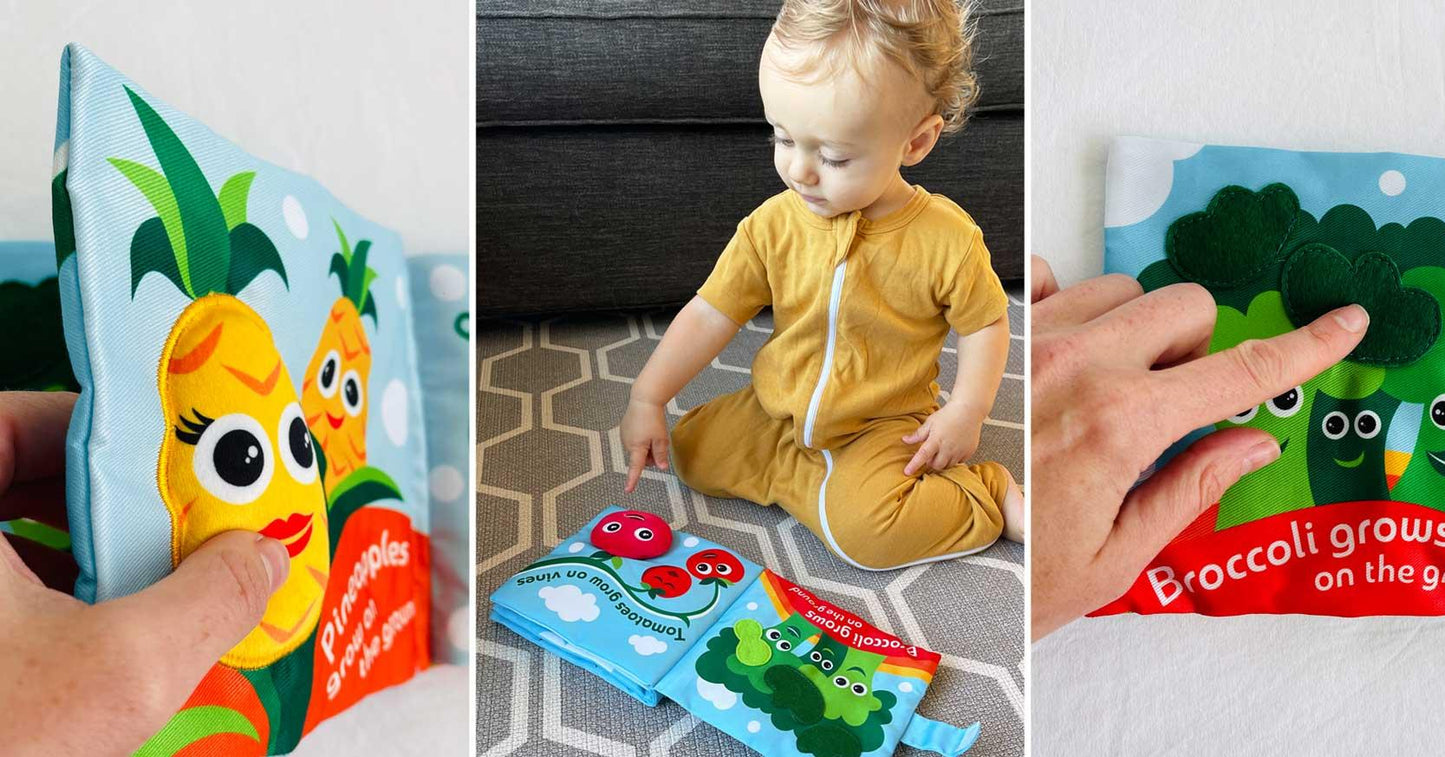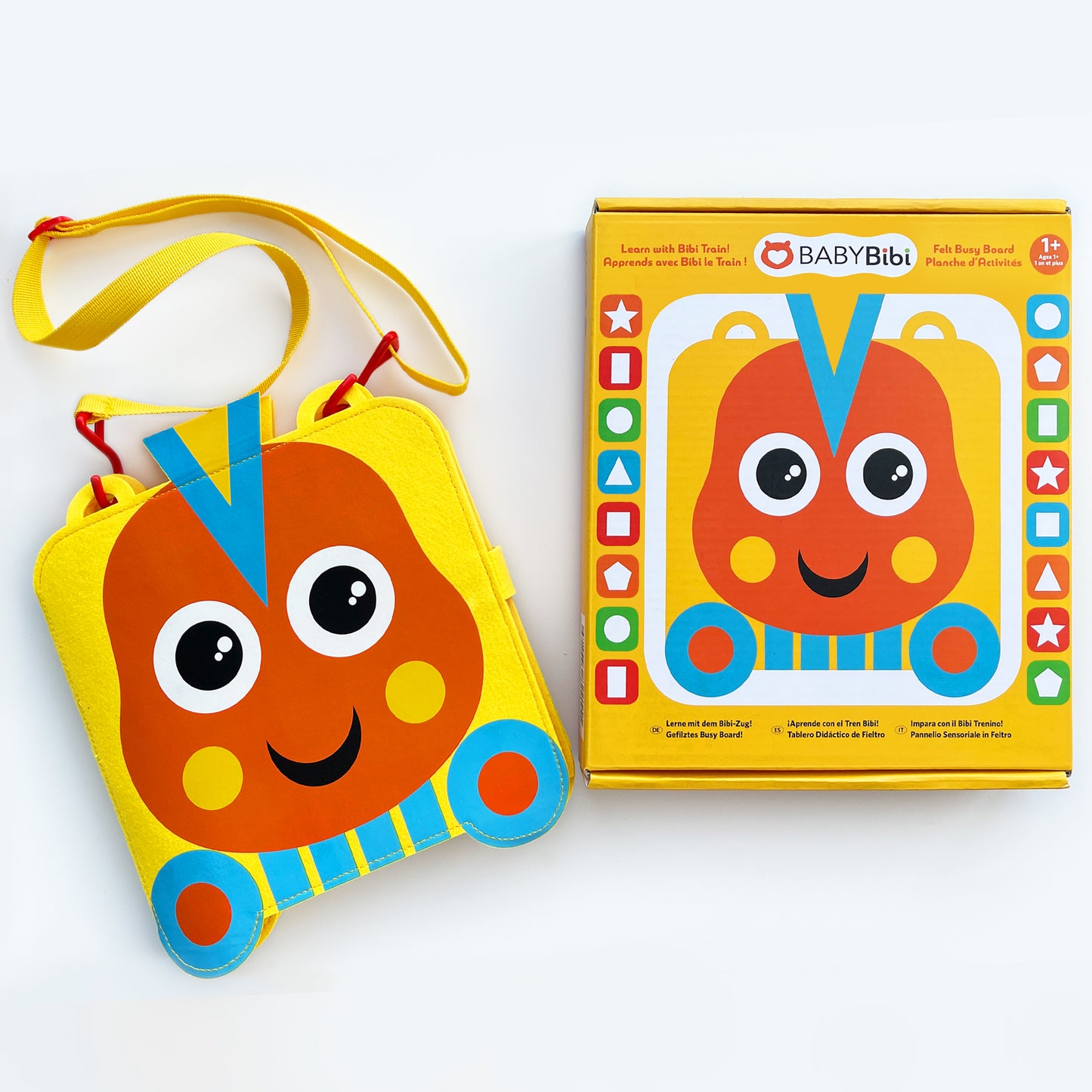
Sensorial Play Without Screens: How Crinkle Books and Textured Toys Support Language Skills
Introduction
You know those moments when the TV’s off, your phone is out of reach, and you just need an easy way to keep your little one happy—and maybe sneak in some learning, too? If you’ve ever wished for play that didn’t involve screens (or constant cleanup), you’re not alone! We’ve all found ourselves looking for something simple and fun that’s more than just a quick distraction. That’s where crinkle books and textured toys come in. In this post, let’s chat about how these everyday sensory play ideas—no batteries, no screens—can help your baby build real language skills. Ready for a few tried-and-true, peaceful play ideas you’ll actually want to use (even on the longest afternoons)? Let’s get started.Key Points
- Sensorial play with crinkle books and textured toys stimulates babies’ senses and lays the groundwork for early language development.
- Choosing screen-free play options helps babies focus, interact, and remember new words and sounds better.
- Everyday moments—like crinkling a soft book or describing a squishy toy—are simple but powerful ways to boost your child’s vocabulary.
- Screen-free sensory toys and interactive baby books encourage more parent-child talk, which is proven to help with communication skills.
- Quality matters: Look for safe, age-appropriate, and easy-to-clean sensory play items that engage multiple senses.
- You don’t need fancy setups—mixing in screen-free, hands-on fun throughout the day helps toddlers and babies thrive.
- Trusting your parenting intuition and celebrating little wins makes a big difference in supporting your child’s language journey.
Have You Noticed How Much Babies Love Noisy, Crinkly Books?
You put a book or a toy in your baby’s hands, and what do they do first? Squish, squeeze, crinkle, chew—every inch is explored. If you’re thinking, “why can’t my baby just look at a picture like big kids do?”—you’re not alone. The truth is, all that crinkling and feeling around is exactly what your little one’s brain needs right now. Crinkle books for babies and textured toys for toddlers are like language lessons in disguise, all without a single screen in sight.
Why Your Toddler Loves Touching Everything
Let’s be honest: toddlers are little explorers. If it crinkles, rattles, or feels interesting—they’re on it. When little fingers squeeze a soft book for toddlers or poke at crinkle sound toys, they’re not just making noise. They’re learning how things feel and sound. That hands-on curiosity is what helps them build brain connections—and yes, those connections are a big part of language growth, too.
- Textures teach words: Bumpy, rough, squishy, soft… all those new feels = new words.
- Sound sparks attention: That crinkle might make your little one look at you, waiting for you to name the object. That’s a conversation starter in baby world!
Screen Free Play Ideas (That Kids Actually Like)
Some days, the screens are calling. We get it. But having a few screen free play ideas ready can make life easier—and less guilt-inducing. Try these:
- Hand your baby a crinkle book in the car seat—they’ll be busy (and safe) while you drive.
- Stash a few interactive baby books in your diaper bag for waiting rooms or errands.
- Make a “touch and feel” basket at home, mixing textured toys for toddlers, washcloths, and soft balls.
Pro tip: Rotate toys every few days. Even old toys feel new when they’ve been missing for a while!
How Sensory Play Helps Build Language (Without Flashcards)
Have you ever narrated what your baby is doing? (“You found the bumpy orange block!”) That’s all you need. Language skills through play happen when you talk about texture, color, and sound—right as your child discovers it. Sensory play without screens means more back-and-forth chatter, face-to-face play, and chances to build that all-important vocabulary.
- Crinkle books: Rustle the pages and say, “That’s so noisy!” or “What does the lion say?”
- Textured baby toys: “This is fuzzy—feel it! It’s a sheep’s wool.”
- Soft books: Point and name pictures: “That’s a strawberry. Can you touch the green leafy part?”
Real Talk: Why Less Screen Time Really Is Worth It
We all have those moments when the tablet just saves the day. But the more we swap in no screen toddler activities—like crinkle books, squishy toys, or baby communication toys—the more our kids get to practice real-life talking and listening skills. You don’t need fancy gadgets. Just a few early learning sensory play options scattered around the house can mean fewer meltdowns…and more giggles.
- Babies talk more to people than to screens; keep chatter going by reacting to what they find or feel.
- Real textures beat virtual ones; it’s hard to squish a picture on a screen, but a soft book page feels just right.
Simple Tips: Using Toys That Build Vocabulary Every Day
- Make toy time chat time. Say silly things about what you’re touching: “So smooth!” or “That’s bumpy like a dinosaur!”
- Let your baby lead. If they’re obsessed with the same crinkly page, talk about it every time.
- Mix up sensory toys for baby development by adding household items—spoons, soft towels, safe containers.
- Don’t stress about mess. Exploration is sometimes noisy, sticky, or scattered. That’s how babies learn best.
When to Introduce Sensory Play (It’s Sooner Than You Think!)
You can start infant sensory learning right from the newborn days. Even tiny babies like to grasp a soft tag or listen to a gentle crinkle. As they grow, switch up the textures—easy to grab, easy to clean, and always safe for little mouths. That’s the power of soft, interactive books and simple textured toys.
The bottom line is: you don’t have to overthink sensory play. Babies have built-in curiosity. You just have to give them safe, interesting things to squeeze, crinkle, and talk about—no screens required.
Trending Now: The Return of Simple Play
- Parents are looking for screen free play ideas that actually hold their child’s attention (and don’t drive parents nuts!) [2] [5]
- More families are sharing their “real life” play moments on social media, focusing on messiness and joy [10] [3]
- There’s a shift toward toys that spark real conversation—think books, blocks, and toys that make sounds and invite touch [1]
So the next time you reach for a crinkle book for babies or a textured toy for toddlers, know you’re not just giving your child something to chew on—you’re giving them a head start in the world of words. And let’s be honest: anything that gives you five minutes of peace (and helps your kid grow) is a total win.
Conclusion: Embracing Simple Sensory Moments
At the end of the day, the most important thing to remember is this: playful learning doesn't need a screen. Babies and toddlers learn best through simple interactions—listening to your voice, feeling different textures, and exploring the world around them with all their senses. Crinkle books for babies, textured toys for toddlers, and other sensory play without screens aren't just fun—they lay the groundwork for language skills through play, spark curiosity, and help your little one’s mind flourish.
Real talk: Parenting in a digital age is tough. Screens are everywhere, and nobody's perfect—sometimes turning on a video is the easier option. But the good news is, those little moments of infant sensory learning add up. Even five minutes flipping through a soft book for toddlers or shaking a crinkle sound toy gives your child a boost.
Want a practical step? Right now, grab a favorite interactive baby book or one of your child's baby language development toys. Sit together, talk about the pictures, name the textures, and make silly sounds. It’s these tiny exchanges—no fancy lessons or technology required—that build vocabulary and confidence.
You’ve got this. Choose even just one screen free play idea today. Each story, squeeze, and giggle is a building block in their growth—and yours too. Remember, little hands and big imaginations go hand in hand. For more inspiration on sensory toys for baby development and early learning sensory play, brands like BabyBibi are ready to help you keep playtime meaningful—and joyfully unplugged.

